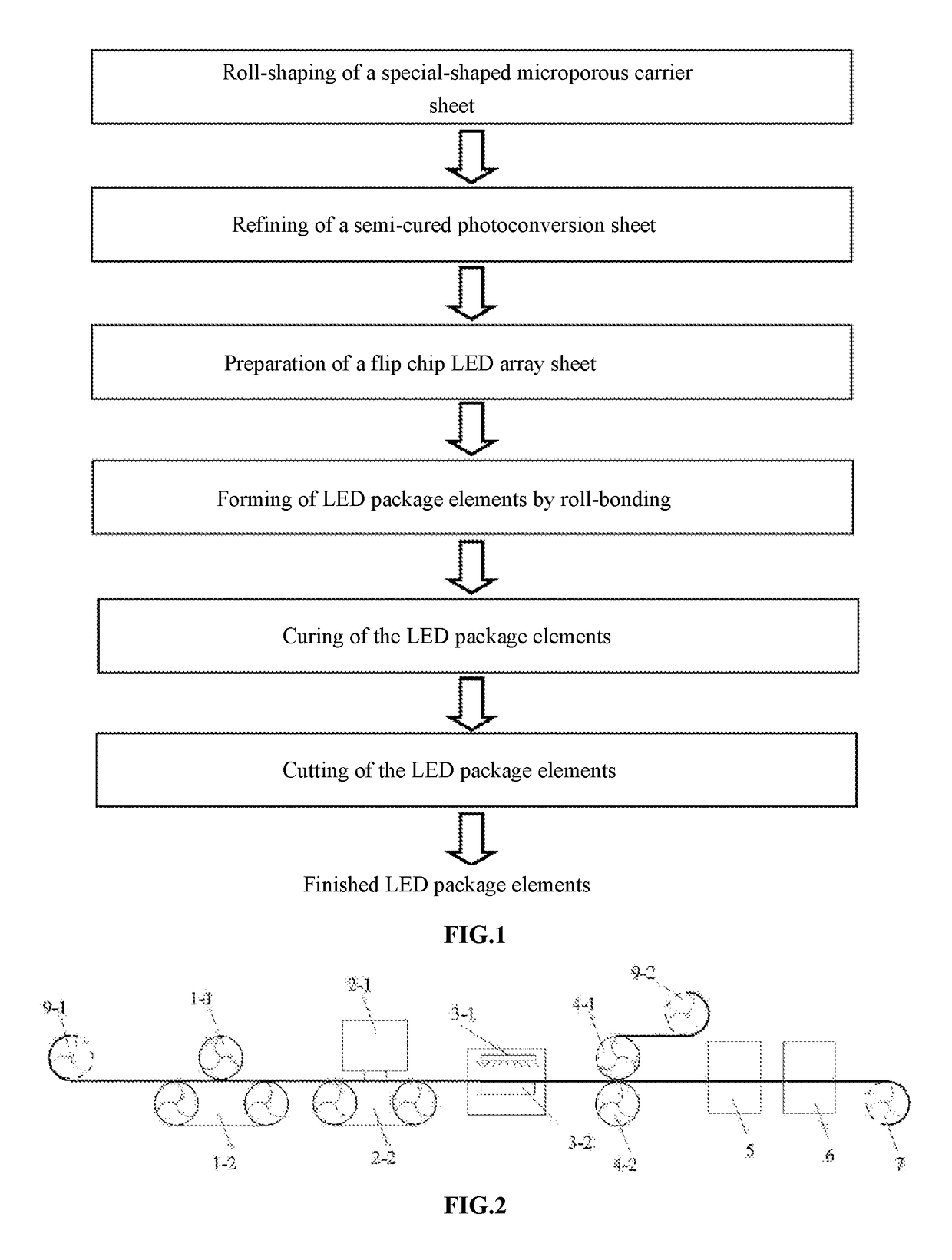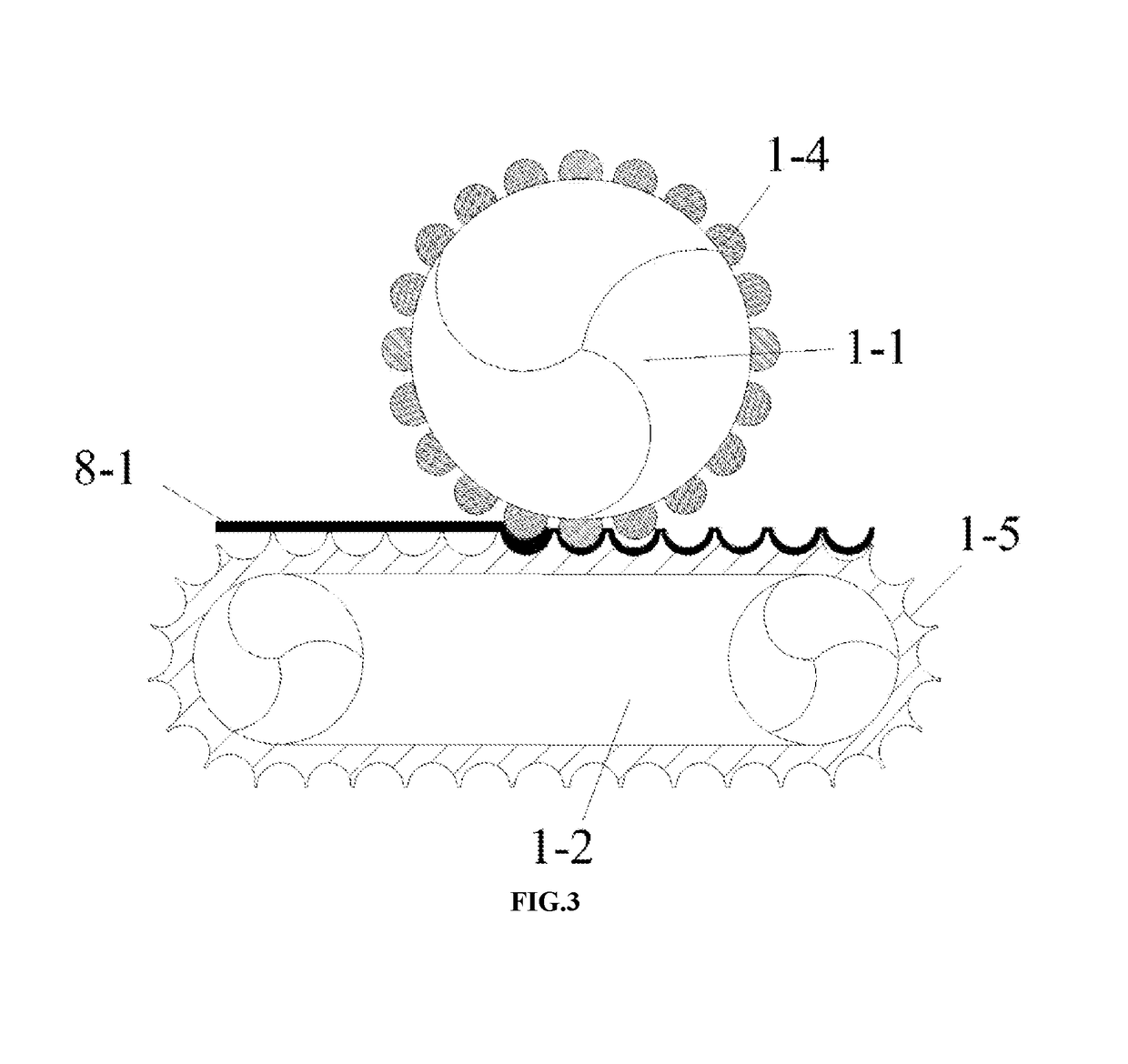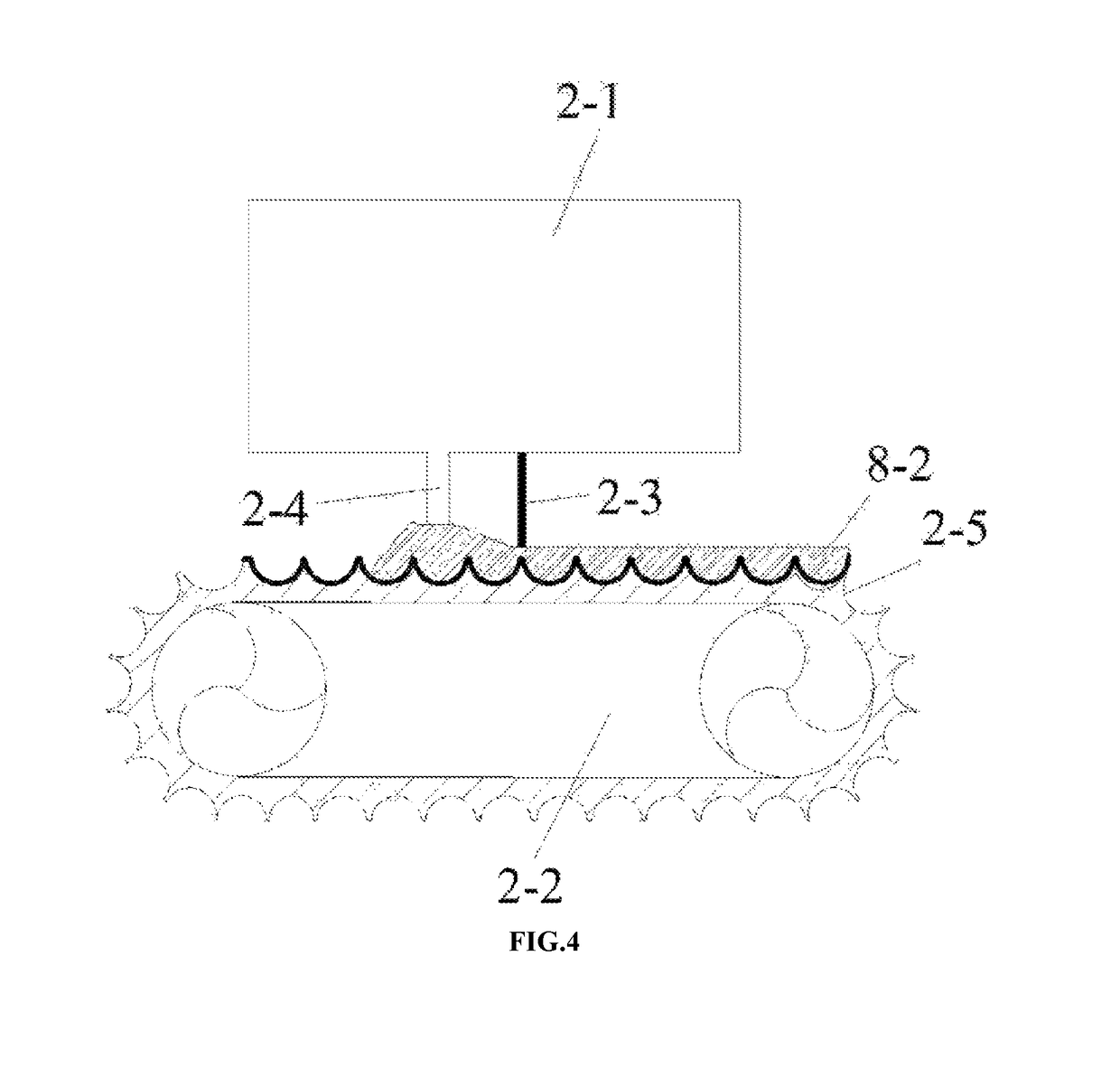Process method for refining photoconverter to bond-package LED and refinement equipment system
a technology of refining equipment and led, which is applied in the direction of basic electric elements, electrical equipment, semiconductor devices, etc., can solve the problems of high product cost cannot be reduced, low yield of leds packaged by using a photoconverter, and impede development, so as to achieve low light emission efficiency, low production efficiency, and low yield
- Summary
- Abstract
- Description
- Claims
- Application Information
AI Technical Summary
Benefits of technology
Problems solved by technology
Method used
Image
Examples
embodiment 1
[0064]Referring to FIGS. 1, 2 and 6, a process method for bond-packaging an LED using a refined photoconverter provided by the present invention includes the following continuous process flow: roll-shaping of a special-shaped microporous carrier sheet, refining of a semi-cured photoconversion sheet, preparation of a flip chip LED array sheet, forming of LED package elements by roll-bonding, curing of the LED package elements, and cutting of the LED package elements. The method specifically includes the following basic steps:
[0065]step 1: roll-shaping of a special-shaped microporous carrier sheet: performing roll-shaping on a microporous carrier sheet by using a first rolling device with a protrusion array and a second rolling device with a recess array that are disposed face-to-face and aligned with each other, to obtain a special-shaped microporous carrier sheet with a recess array, a micropore diameter of the microporous carrier sheet being not greater than 10 μm;
[0066]step 2: ref...
embodiment 2
[0095]The present invention provides a refining equipment system applied to the process method for bond-packaging an LED using a refined photoconverter, which includes: a special-shaped microporous carrier sheet roll-shaping apparatus used for performing roll-shaping on a special-shaped microporous carrier sheet; a semi-cured photoconversion sheet refining apparatus used for forming a semi-cured photoconversion film on the shaped special-shaped microporous carrier sheet; and a roll-bonding apparatus used for forming LED package elements by roll-bonding, where the special-shaped microporous carrier sheet roll-shaping apparatus, the semi-cured photoconversion sheet refining apparatus, and the roll-bonding apparatus are sequentially arranged to form cooperatively linked process equipment.
[0096]The special-shaped microporous carrier sheet roll-shaping apparatus includes a first rolling device with a protrusion array and a second rolling device with a recess array that are disposed face-...
PUM
| Property | Measurement | Unit |
|---|---|---|
| diameter | aaaaa | aaaaa |
| temperature | aaaaa | aaaaa |
| temperature | aaaaa | aaaaa |
Abstract
Description
Claims
Application Information
 Login to View More
Login to View More - R&D
- Intellectual Property
- Life Sciences
- Materials
- Tech Scout
- Unparalleled Data Quality
- Higher Quality Content
- 60% Fewer Hallucinations
Browse by: Latest US Patents, China's latest patents, Technical Efficacy Thesaurus, Application Domain, Technology Topic, Popular Technical Reports.
© 2025 PatSnap. All rights reserved.Legal|Privacy policy|Modern Slavery Act Transparency Statement|Sitemap|About US| Contact US: help@patsnap.com



